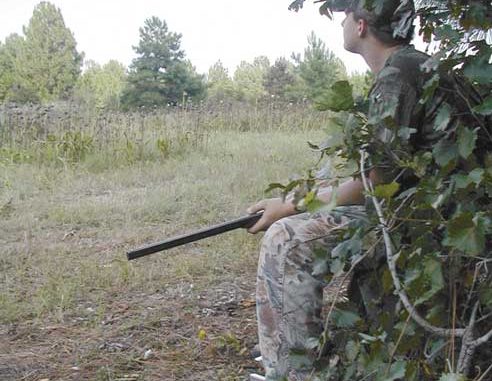
It’s not too early to start thinking about this fall’s dove hunt and what will make it great.
Standing in the shadows on the edge of the field, we knew we had gotten lucky. How lucky we were was not obvious yet, but judging by the number of doves roosting in the treeline to our immediate left and the powerline that crossed the road 200 yards in front of us, we were all justifiably excited. My sons, 14-year-old Clay and 11-year-old Will, pointed out this flock and that flock, and it was all I could do to encourage them to get to our stand before the official shooting time arrived. We were participating in a Youth Dove Hunt sponsored by the S.C. Department of Natural Resources. The field we had been drawn to hunt was the Ross Mountain Field in Oconee County. The DNR, partnering with the U.S. Forest Service, manages this field especially for the annual youth hunt, made available to the public through a lottery drawing.
It was obvious from the number of birds roosting and loafing in the area that this field was where the doves wanted to be. Glancing around, I counted the four major attractions that make a potential field a great one. They were all here, thanks to some advanced planning — and planting — by the resource managers.
It was Opening Day across the state, and soon enough, stories began rolling in from other dove hunters about how it wasn’t a good year for doves or how there seemed to be plenty of food but the birds didn’t seem to be responding.
For South Carolina hunters interested in having a memorable day in the field — the kind that veteran dove hunters so often wax nostalgic about — the time to get started is now. Preparing a dove field is more about proper planning than it is about shooting.
In the motion picture Field of Dreams, the quote “If you build it, they will come,” is repeated often. Hunters need to understand that if you plant it the right way, in the right place, doves will come.
Creating a dove field that will have doves aplenty on both Opening Day and well into the late seasons requires four main ingredients and some common sense. The ingredients are: a variety of food, a water source, roosting habitat, and dirt (also referred to as grit).
Habitat
Let’s consider the location of your field before deciding what to put in it. The mourning dove is not a notoriously intelligent bird, but it can be extremely wary. Doves feel secure in areas where they can fly in and look over a potential feeding ground before they drop in for dinner. When selecting an area that has not been previously used as a dove field, give consideration to the lay of the land.
“Our best dove fields have a combination of hilly areas for roosting and flat areas for planting” explained Richard Morton, a small-game biologist for the SCDNR. “The locations doves may prefer to roost in include trees, powerlines or other structure that provides them a high vantage point to watch for danger. Doves don’t care much for thick cover, like a grove of trees, but a solitary tree on a hilltop or a dead snag standing alone in a field acts like a magnet.”
If the location you have chosen is devoid of natural roosting cover, overhead power and utility lines make a great substitute. While doves will use a variety of utility lines, simple single-strand lines atop a 20- foot pole puts birds high enough to allow them to detect predators but doesn’t require them to drop too far to feed or navigate around a multilevel tower.
Food sources
Doves are opportunistic feeders, readily dining on a variety of plants. The common factor is that doves require small, seed-bearing plants to thrive. Seeding plants can be of the “wild” variety such as grasses and weeds associated with open land, or they can be agricultural commodities such as wheat, millet, corn, or sunflowers.
Many field managers fail to recognize the importance of drawing doves to the fields before they are hunted and maintaining the fields to provide for doves through the various late seasons. Birds that are responding to a “hotspot” dove field will typically abandon that area once shooting starts or the food becomes scarce.
Chris Holcombe is a wildlife manager for the U.S. Forest Service in the Andrew Pickens Ranger District. He recommends three major types of food sources for hunters and field managers who want to attract and hold doves in their fields.
“Wheat is probably the most important food source that I plant for doves,” said Holcombe, a former SCDNR employee. “Wheat is planted in the fall, where it is allowed to lay dormant through the winter. Once spring and summer come around, the wheat grows up and produces heads, I can actually mow the wheat a couple of times through the summer, and it will head up and be ready to manipulate a couple of weeks before the opening of dove season. That way, when hunting begins, the birds are already using the field.”
Care should be taken when planting wheat in the fall and hunting doves during the late season. The Clemson University Extension Service published an advisory a few years ago on what was considered normal agricultural process in order to help law enforcement distinguish between legal planting and illegal baiting of doves.
Baiting of dove fields is often confused with normal agricultural process to attract doves. The basis behind the term “normal agricultural process” is that during the harvest, seeds may fall to the ground and become available to wildlife. Hunting over normally harvested fields is legal. No “top sowing” of additional grain or redistribution of grain once it has been removed from the field may occur. If invited to hunt a private field that you are not familiar with, it’s advisable to visit the field several times before the hunt to check conditions before the hunt to make sure the field is legal.
Millet and dove proso — an engineered millet developed by the U.S. Soil Conservation Service and the University of Georgia to be used primarily as a dove food — is another important food source to include in your field management plans. Millet is generally planted between May 1 and July 1 in order to be ready for manipulation before dove season. Stands of millet are best when they cover at least three acres
Sunflowers and corn are important ingredients for field managers, as these plants can provide both food for doves and scattered cover for hunters. Sunflowers and corn are row crops, and row spacing of three to four feet apart works best. Many farmers and field managers have discovered the versatility of using a “no-till drill” attachment for planting. The drill woks similar to a row seeder and can also be used to plant wheat and millet.
Another positive of planting corn and sunflowers is that plants will retain their crops late into the season — although the longer the plants stand, the more deer and raccoon populations take their toll. Leaving stands of corn and sunflowers allows managers an opportunity to cut, rake, disc, or burn standing crops in order to “refresh” the food on the ground and attract late migrating birds.
Legal field manipulation can include mowing, burning, dragging down or discing and does not have to be related to any type of agricultural process.
Water source
Small creeks and streams comprise the vast majority of available water sources, particularly in the Upstate. As with roosting areas, doves prefer an open area in which to water and bathe rather than a deep-sided water body surrounded by dense horizontal vegetation. Ponds or flat sloughs that provide a open “beach area” work well. Hunters should not overlook ditches or culverts when selecting field locations, as doves will flock to standing water as long as it’s not completely stagnant or septic.
Hunters may convert a field that is devoid of a water source but otherwise nearly perfect by pushing up a drainage basin at the lower end of the field. While this type of water source will rely upon ample rainfall to keep it stocked and refreshed, it gives migrating birds the essential ingredient to bring them to the field.
Because most any location in South Carolina is generally within a dove’s flight distance to a creek or stream, setting up plantings and shooting stands that take advantage of migration routes between food on your property and water on another property is a smart idea.
Dirt
According to Morton, “dirt or grit is just as important in a dove’s daily routine as food and water.”
Grit is used on a daily basis to aid in the dove’s digestion of grain.
“Leaving access to open soil allows the birds an opportunity to consume the grit they need and lets them find seeds that have been knocked loose from standing crops,” Morton said.
It is commonly accepted that a field that is half-cultivated soil and half-planted crop is much more attractive to doves than a field full of crops with no openings. Doves rarely if ever scratch for food, and not having enough exposed soil to give doves room to move around and pick up seeds can be a deal-breaker.
Some final notes about getting ready for dove season includes a word or two about who your neighbors will be. A field that has all the key ingredients but is located adjacent to houses or public property will result in a headache once the shooting starts.
Each year, the SCDNR receives numerous complaints from residents who protest the noise or claim their houses have been damaged by flying shot. Make sure your field has plenty of room between hunters and anyone who may be living on or using property nearby. Safety of others is the dove hunter’s primary responsibility.
Another piece of advice when looking at organizing a club or converting land into dove-hunting property is to protect yourself and the landowner by purchasing a hunting liability policy. Having the forethought to do so can be a great selling point when approaching a landowner about permission or a potential lease.
While September may be months away, make your plans now to get your dove fields in shape. Building those memories of a lifetime begins today.

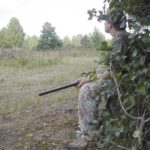
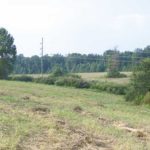


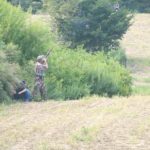
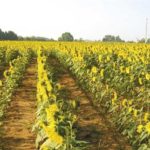



Be the first to comment